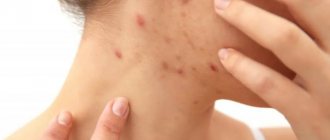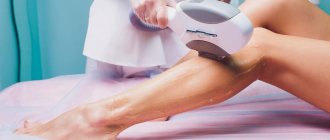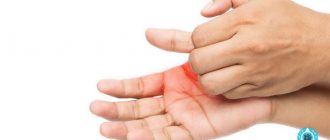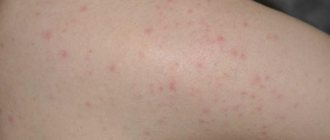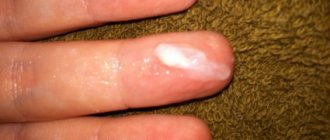Any type of rash brings discomfort to people. Pimples on tattoos look especially ugly. The appearance of a rash is influenced by many factors - both poor hygiene during printing and the characteristics of the human body. Therefore, before applying a tattoo, a professional artist must assess the condition of the skin in order to prevent unpleasant consequences.
Causes of acne on tattoos
It is difficult to predict which factor causes the body to react with skin rashes. Here are some of them:
- Allergy to paint. Is the most common reason. Poor-quality paint used when applying a tattoo, the individual reaction of the body to its components.
During adolescence, almost every teenager develops acne on their skin. Therefore, it is recommended to refuse drawing
- Non-sterile equipment. When using a poorly treated tattoo machine (or other equipment), it is quite possible to get an infection that will cause an inflammatory process.
- Allergy to healing ointment. A fairly common cause of small rashes appearing on or near the tattoo itself.
- Problem skin type. If the skin was prone to acne before getting a tattoo, then it is natural that after its appearance they will not disappear, and even, on the contrary, breakouts may become more frequent. People with problem skin should think twice before getting a tattoo. A good specialist will advise you to first consult a dermatologist.
- Poor hygiene. Failure to maintain cleanliness can cause acne to appear, subsequently clogging the pores and accumulating bacteria in them. Recommended aftercare will help prevent acne after a tattoo.
Acne and tattoos
Cosmetologists strongly do not recommend getting tattoos for people who regularly experience acne on their bodies. After all, the desire to decorate yourself with an attractive picture in such a situation can result not only in aesthetic problems, but also in health problems. The appearance of acne on a tattoo increases the risk of developing inflammatory processes of varying severity, which can lead to sepsis - blood poisoning. And this condition poses a direct threat to human life.
Under no circumstances should tattoos be done on acne. But it also happens that rashes appear after the tattoo is completed.
How to properly care for a tattoo
Care during the first period of tattoo healing is extremely important:
- Having finished applying the tattoo, the artist covers the design with a special protective film to limit contact with the external environment as much as possible and avoid infection. From this moment on, responsibility for the condition of the tattoo and the skin itself falls directly on the shoulders of the owner.
- After 4-8 hours, you can remove the protective film and rinse the tattoo from the ichor with water. This should be done with your fingers, without using a sponge or washcloth. After this, you can easily wipe the tattoo with a cotton swab from the center to the edge, but not dry.
- The tattoo should dry on its own, then a special ointment should be applied to it. After this, apply the healing film again.
Expert on pimples on tattoos
If you definitely decide to get a tattoo, be sure to find a good tattoo parlor. If possible, do an allergy test. After the procedure, follow all recommendations of your tattoo artist. If the skin manifestations are not typical, do not self-medicate. It is better to immediately consult a dermatologist.
Kira Zolotareva
Sterility is important for the next three days after application. Under no circumstances should you scratch or pick at the tattoo site, even if you feel severe itching, as there is a risk of infection. If the requirements are not met, the tattoo may become covered with purulent pimples, and the area around it may become very red and swelling may occur.
On the third day, you can finally remove the healing film, but you will have to treat the tattoo more often: 4-6 times a day. You should not allow a crust to appear after the tattoo has completely dried - the skin should always remain moisturized.
Failure to comply with medical standards and the use of homemade ink for tattooing can lead to disastrous consequences
The tattoo heals completely after 10-14 days, the period depends on its size and density. During this period it is recommended:
- do not take a hot bath (shower only), avoid going to the bathhouse and sauna. Hot temperatures and high humidity will not benefit a tattoo that has not yet healed;
- Do not engage in vigorous physical activity for approximately 10 days. During physical activity, the body may sweat too much, including at the tattoo site, which will provoke the appearance of bacteria;
- Avoid contact with animals if possible, again due to the possibility of infection;
- avoid long exposure to the sun; sunbathing is not recommended at all;
- avoid ionizing radiation;
- Avoid contact with sea water and sea salt;
- do not visit the pool;
- Avoid drinking alcohol.
By adhering to such simple rules, there is a real guarantee that acne will not appear at the tattoo site, and unwanted skin reactions can be avoided.
Rash on tattoo
Main reasons
Finding out what exactly caused acne to appear on a tattoo can be difficult. Many factors can trigger skin rashes:
- Irritation.
- Allergic reactions of various types.
- Lack of sterility when performing tattoos.
- Insufficient proper tattoo care. To fully restore the skin, you must carefully follow the recommendations of the specialist.
- Improper hygiene, in particular, irregular water procedures or infrequent changes of clothes, etc.
- Problematic skin, for example, in adolescence.
- Other diseases (herpes, infectious diseases such as chickenpox, etc.).
In order to find out what caused acne on a tattoo, you should consult a dermatologist. An immediate visit to the doctor is necessary if the rash causes severe discomfort or actively increases.
Irritation
Quite often a tattoo, especially a fresh one, increases the sensitivity of the skin to various substances. In particular, many cosmetic products that have never previously caused any negative reactions in a person can cause discomfort, itching, rashes and other symptoms of irritation in the area of the picture. Even wardrobe details or bedding can be a provoking factor.
Such reactions should not be considered an allergy. They usually disappear fairly quickly after a few weeks have passed since the tattoo.
Rashes that occur as a result of irritation can be prevented. For this you should:
- Avoid using all kinds of chemicals and cosmetics in the area of your new tattoo for at least a couple of weeks.
- Protect the tattooed area from contact with all kinds of objects or materials that can cause irritation.
- Prevent skin friction in the tattoo area.
If rashes do appear, it is better to consult a doctor and stop exposure to factors that could cause acne.
Allergic reactions
Many people visit a dermatologist asking whether an allergy could be the cause of tattoo rashes. And in fact, individual intolerance to the components of the dye is one of the most common causes of acne. Today, modern tattoo parlors do not use paints that contain significant quantities of mercury and metals (it is these substances that most often provoke allergies). Nevertheless, the risk of manifestations of individual intolerance remains. So, they appear quite often:
- If the master independently combines the coloring powder with the base, in such a situation the proportions of the paint may be disrupted.
- If a yellow or red dye is used, since they contain cinnabar (mercury sulfide) and cadmium. The likelihood of developing a tattoo allergy increases if the yellow tattoo is exposed to sunlight.
Allergies can occur even when performing temporary henna designs. Unpleasant symptoms are explained by the individual characteristics of a person, and it is quite difficult to assess the risk of its occurrence.
It is worth noting that the cause of tattoo allergies can be not only paint components, but also other allergens, in particular:
- Local anesthetics, which are used to relieve pain during the procedure.
- Various topical medications with antiseptic or healing properties.
How to determine?
Tattoo allergies usually present with the same symptoms as other types of hypersensitivity:
- Redness of the skin, including those located near the picture.
- The occurrence of discomfort. Most often, the tattoo itches, and sometimes quite intrusively.
- Peeling of the skin.
- Rashes of various types. Most often, small white pimples appear, symptoms of urticaria are possible (swollen redness, like after a nettle burn), sometimes even blisters and ulcers can occur.
- Swelling of the skin.
An allergy to a tattoo almost never causes generalized reactions, however, if anesthetics are the culprit of individual intolerance, a person may also be bothered by:
- Swelling of the mucous membranes.
- Runny nose.
- Itching and burning in the eyes.
- Obsessive lacrimation.
- Dry cough.
If unpleasant symptoms progress quickly, you should not hesitate. It is better to seek medical help as soon as possible.
It is important to consider that there are cases where an allergy to a tattoo occurred months and even years after application. This situation can be explained by the influence of various provoking factors, in particular high temperatures (summer heat, saunas, etc.).
Possible allergic reactions to a tattoo
An allergic reaction to a tattoo is a common phenomenon, since the appearance of a foreign substance in the skin is stressful for it and for the entire body as a whole. Of the possible allergic reactions to tattoos, two types can be distinguished: an allergy to the paint that was used to apply the tattoo, and to the healing ointment that is used afterwards.
Often, allergies cause numerous bumps and small red or white pimples on or under the tattoo, which cause severe itching and discomfort, including aesthetic discomfort. The area of skin around the tattoo may turn slightly red.
Preventive recommendations
To prevent the possible appearance of a rash on the embossed design, you must choose a professional tattoo parlor to perform this procedure. You can read reviews on social networks or ask friends which masters have a good reputation. Before getting a tattoo, it is important to make sure the quality of the inks used and the sterility of the instruments. Before applying a design to the client’s skin, the artist must test him for an allergic reaction. After the procedure, it is not recommended to visit the sauna, swimming pool, bathhouse or solarium, or to be exposed to sunlight for a long time. Do not touch the tattoo with your hands, rub it with a washcloth, or peel it.
What to do if a pimple appears on your tattoo
If pimples appear around your tattoo, it is important to understand the cause of the breakouts. With an allergic reaction, in most cases the problem goes away on its own over time. But if this does not happen, you should not self-medicate by resorting to traditional medicine. First of all, you should contact a dermatologist.
Treatment will depend on the type of allergy and the nature of the allergen. Standard therapy involves applying an antihistamine to the affected area for several days. If the allergy is severe and the condition worsens, a decision may be made to prescribe hormonal medications. In extreme cases, you will have to remove the tattoo.
The affected area should be washed with salicylic alcohol, being careful not to damage pimples and tattoos.
If acne appears, follow these rules:
- Do not scratch them under any circumstances, even if the itching is very strong;
- do not squeeze out the contents;
- continue to follow standard hygiene practices;
- Do not scrub with a washcloth or wash the affected area of the tattoo too much - this can lead to additional irritation.
In standard cases, the rash is treated with salicylic alcohol, and then an anti-inflammatory ointment prescribed by a dermatologist is applied to the dried skin.
Treatment can take a lot of time, effort and material costs. However, there is an opportunity to avoid all these unpleasant things.
Treatment methods
If acne appears on your tattoo, you should first contact a dermatologist, who will indicate the cause of the problem. Under no circumstances should you scratch, squeeze out pimples or use a washcloth. This can only make the situation worse.
Blood poisoning is a serious threat to human life, which can even lead to death. Delay leads to further spread of infection and tissue necrosis.
If you find a pimple on your tattoo, you should wash the area of skin with salicylic alcohol and leave to dry. Under no circumstances should you rub the wound with a towel or washcloth. After this, anti-inflammatory ointment “Gyoksizon” is applied to the affected area and left for half an hour. This procedure must be repeated twice a day and only after consulting a doctor.
If acne is allergic in nature, you should start taking antihistamines. The tablets will help reduce the impact of the allergen on the body, and the ointment will relieve itching and swelling. In any case, self-medication is not the best way out of the situation, so first consult with an allergist. In rare and complex cases, hormone therapy may be needed.
First signs and symptoms
External signs of a tattoo allergy may appear immediately during the tattoo application procedure or after a certain period of time. An allergy to a colored tattoo can appear even months after application. This is usually due to the sensitivity of some pigments to changes in temperature. When the temperature rises to +28°C, some substances in paints can change their structure and cause an allergic reaction.
Typical allergy symptoms:
- swelling of the skin;
- severe itching;
- severe hyperemia;
- allergic rash in the form of urticaria, with the formation of blisters, papules, nodules.
Over time, elements of the rash may open, and a scab forms in their place. In the absence of treatment, the source of inflammation becomes a gateway for infection.
More severe manifestations of allergies can include:
- swelling of the oropharynx;
- difficulty breathing;
- angioedema.
Not only a local reaction to a tattoo can develop, but also:
- allergic rhinitis;
- tearing eyes;
- pain in the eyes;
- allergic cough.
What not to do
Very often, when visiting doctors, people say the following: “I have pimples on my tattoo. What to do?" In such a situation, first of all, you should pay attention to what you absolutely cannot do.
So, the list of prohibited actions when acne appears on a tattoo is as follows:
- It is forbidden to squeeze pimples so as not to spread the infection and damage the skin;
- It is not allowed to scratch the area of the design, even if the pimples on the tattoo itch;
- It is forbidden to rub acne with a washcloth;
- You should not engage in self-treatment without prior consultation with a competent specialist.
By following these rules, you will significantly minimize harm to your skin and the entire body.
Why does allergies occur?
An allergy is a mistake of the immune system.
Because of this error, the immune system perceives the substance as dangerous. The notorious “features of the body” are to blame. We are all different: some people are not bothered by allergies at all, while others are afraid of allergens like fire and start itching when a cat comes into the room.
Another reaction may occur due to poor-quality paint. Let’s say you got a tattoo in “makeshift” conditions, and the would-be artist used a homemade or cheap pigment that contained mercury.
Any chemical can cause skin irritation, but such a reaction has nothing to do with allergies. However, to avoid troubles, check what paints the master or salon works with. Reliability and reviews of products can be checked on the Internet.
Causes of the body's acute response
The main trigger for tattoo allergies is the ink. Pigments containing mercury are especially dangerous. A reaction may occur if the artist does not use ready-made paint, but mixes the pigments himself or uses expired ink. If the proportions of the base and powder are violated, a mixture may result that causes allergies.
Pigment composition:
- Red: iron hydrate, mercury sulfide; brazilwood.
- Blue: cobalt aluminate.
- Yellow: chromium oxide, cadmium sulfide, turmeric.
- Black: iron oxide, logwood.
- White: zinc oxide, titanium oxide.
- Brown: iron oxide, ocher.
- Green: Lead chromate, chromium oxide.
More often, allergies develop to yellow, red, and violet pigments based on cadmium, mercury, and chromium. Black paints with paraphenylenediamine are classified as toxic and it is generally not advisable to apply them to the skin.
Sometimes an allergic reaction can also occur to a natural dye - henna. Henna tattoos are popular during seaside holidays. They are preferred to be applied to children. 20% of children experience skin irritation from such tattoos. An additional irritant in the form of paint provokes an excessive immune response.
Another triggering factor for allergies can be anesthetic drugs that are used before the tattoo procedure. The risk of developing allergies increases in people with a history of other allergic or dermatological diseases (bronchial asthma, dermatosis, allergies to pollen, animal dander).
Can there be an allergy to nicotine and how to recognize the disease? We have the answer!
Read about what skin allergies look like in children and adults and how to treat them at this address.
How to protect yourself
It's simple.
- Firstly, ask the future master what kind of paint he uses, ask for the composition of the paint. A good master is not afraid to share information about his work.
- Secondly, if you are afraid, do an allergy test. Ask your professional to apply a few drops of paint to the area where you plan to paint. Check it out in three or four days. If there is no irritation, then the test is negative.
- Thirdly, get a tattoo from trusted artists and tattoo parlors, then there is a risk of manifestation. allergies will be kept to a minimum. Specialists in their field comply with sterility requirements and use high-quality materials.
In general, look for a good master and everything will be fine =)
How to check if you have allergies
As far as we know, there is no reliable method.
You can do a patch test. A day or two before the session, you need to come to the master and ask him for the paint he is going to use for the tattoo. After this, take a three-layer piece of gauze measuring 1*1 cm, wet it with paint and glue it to the forearm. After a day or two, the gauze should be removed and the skin examined. If itching, redness or swelling appears, the test is positive, you have an allergy.
Unfortunately, this test will not show a 100% result. First, it is not standardized from a medical point of view. Secondly, the concentration of paint may not be enough to cause a reaction.
Another point: if you are going to use several colors, you will have to do this procedure with each tube. The tests may take a month, and the result will still be useless.
There are other “folk” methods. For example, make a scratch and apply paint on it, or make a tattoo dot with a machine, that is, a tiny real tattoo. But we do not have verified data that these methods work.
